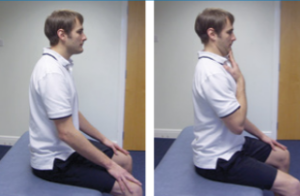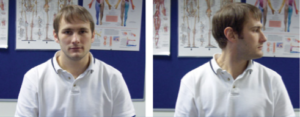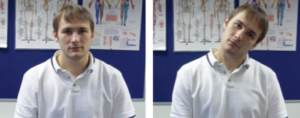About whiplash
Whiplash is the term used to describe a neck injury caused by a sudden movement of the head forwards, backwards or sideways.
The sudden, vigorous movement of the head can injure the ligaments and tendons in the neck and can lead to pain, stiffness and a temporary loss of movement in the neck. Headaches, muscle spasms and pain in the shoulders or arms are other possible symptoms.
What causes whiplash?
Whiplash is common after motor vehicle accidents involving a collision or as a result of a violent blow to the head (for example, during contact sports such as boxing and rugby).
What are the symptoms of whiplash?
The symptoms of whiplash often take a while to develop after an accident. Any inflammation and bruising in the neck muscles won’t usually be obvious at the time of the accident.
There are no set times for the onset of pain following a whiplash injury although pain and stiffness is often worse on the day after the injury.
The pain may continue to get worse during the days after the injury.
Following a whiplash injury if you suffer from any dizziness with sustained head rotation, weakness in both arms or legs (not related to pain) or persistent, very severe pain you should consult your GP.
It can sometimes take a number of months for the symptoms of whiplash to disappear completely and some people still have some neck pain and stiffness for a long time after the injury.
What treatments help whiplash symptoms?
There are a number of treatments that can ease the symptoms of whiplash.
Exercise
If you have whiplash, it is VERY important to try to move your neck normally. If the pain in the neck is severe, you may need to rest the neck for a day or so until the pain eases.
It is not advised to use a soft collar as this may cause the neck to stiffen up.
After the pain has eased, exercise your neck gently so that it doesn’t become stiff. Move the neck slowly in each direction, gradually increasing the range of movement (see exercises on the next page). Continue with your normal daily activities.
Painkillers
Painkillers such as paracetamol will help to ease the pain caused by whiplash.
Non-steroidal anti-inflammatory drugs (NSAIDs) such as ibuprofen will help to reduce any inflammation (swelling) in your neck. Paracetamol and NSAIDS can be taken together.
Taking painkillers regularly, rather than only when the pain is severe, may help to prevent the pain getting worse (do not exceed the recommended dose).
When taking painkillers, always follow the instructions on the leaflet that comes with the medicine or consult your GP if you are unsure. If paracetamol and NSAIDs do not relieve the pain, your GP or pharmacist may prescribe a stronger painkiller.
Good posture
Maintaining a good, upright posture by keeping your back straight while you’re sitting, standing and walking can help prevent the pain and stiffness in your neck from getting worse.
Supporting your head with a firm pillow will help you to maintain a good posture while you’re sleeping.
Physiotherapy
If pain persists you may require assessment and treatment from a physiotherapist. This may include exercises, joint mobilisations, strengthening work as well as other forms of treatment.
Recommended exercises
Advice taken from the Chartered Society of Physiotherapy (CSP) whiplash guidelines
Retractions
Retractions

- Sitting or standing against a wall or lying down, tuck chin in keeping eyes level.
- Hold for 10 seconds.
- Repeat 10 times.
- Perform exercise 3 times a day.
Rotations
Rotations

- Sitting, turn your head to right then left.
- Hold for 10 seconds.
- Repeat 10 times.
- Perform exercise 3 times a day.
Side flexions
Side flexions

- Sitting, bend head to right and left making sure you do not twist your head.
- Hold for 10 seconds.
- Repeat 10 times.
- Perform exercise 10 times a day.


